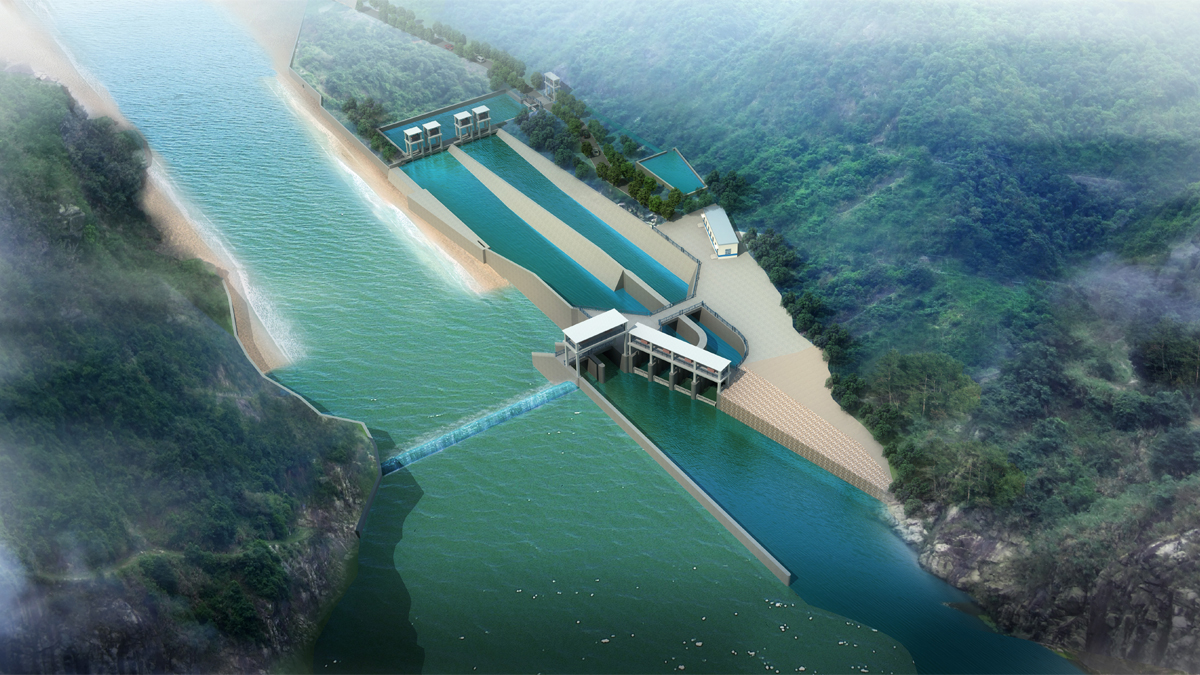
Kathmandu; The problem of electricity wastage during the rainy season is increasing in the past few years, thanks to the government authority not showing concerns towards utilizing the capacity of power plants at their fullest.
According to the Independent Power Producers Association of Nepal (IPPAN), this year during the rainy season, the problem has become more serious. The private sector developers said due to the lack of transmission lines, they are unable to produce at full capacity.

A study conducted by the IPPAN shows they lost nearly one and a half billion rupees last year alone, while they have projected to lose another billions of rupees in this peak season. Last year, 10 hydropower projects operated under contingency and 10 others were added in the list this year. It shows that the problem is growing year on year.
Due to the weak capacity of the transmission line, most of the projects in Gandaki Province have witnessed waste of electricity they produced. The problem is expanding in other provinces including Bagmati, Koshi and Sudurpashchim as well, according to the IPPAN.

As of now, 20 hydropower projects have been facing the problem of power wastage. The IPPAN alleges that most of the suffered power plants were taken to the power purchase agreement (PPA) under the take-and-pay model by the NEA. The authority, in addition, has asked those which do not abide by this model, to close their power plants.
Most of the projects facing the above mentioned problems are located in the Dordi Corridor of Lamjung district. The promoters complained that the power plants had to be shut down under the pressure of the authority even though they have access to the transmission line with higher capacity. The projects running in Parbat district have also been facing similar problems.
During the period of Nepali Year 2079 (mid-April 2022 to mid-April 2023), private sector projects witnessed a loss of about Rs 1.37 billion. In the rainy season this year, the private developers were expected to earn income of Rs 5.804 billion; instead these 20 hydropower projects are projected to lose their earnings worth Rs 2.323 billion. Most of these projects are not able to operate at more than 50 percent of their capacity.
"Discussions on this matter are going on with the NEA, Nepal Rastra Bank and Nepal Bankers’ Association," said the IPPAN Chairman Ganesh Karki. Responding to the queries on what the umbrella organization can do as the situation is going complex, Chairman Karki said if the authority does not buy electricity at this situation, then not only a negative message is disseminated to the market, but also it will adversely affect the entire economy.
The NEA Spokesperson Suresh Bahadur Bhattarai however blamed the private sector for making the rumour unnecessarily. “We are not aware of the official data of the private developers. It might be due to the impacts of floods during this rainy season that these projects could be running at half of their capacity," Bhattarai told Urja Khabar.
"The projects that had signed PPA under the take-and-pay cannot decline from their agreement. Still, it is definitely not good to let the produced electricity go to wastage."
Bhattarai blamed the private companies for exaggerating the issue, adding that the NEA has been running as per the provisions of the PPA. According to him, the 54 MW Super Dordi is operating at 26-27 MW and the 25 MW Upper Dordi 'A' is producing only around 9 MW. He also pointed out that a number of flood affected projects have been operating only one or two units of their power house to produce electricity.
Added woes during mid-June and mid-July
The data collected by IPPAN shows that the situation of the projects that produced electricity and supplied it to the NEA in one month between mid-June and mid-July is more worrisome. The 42 MW Mystery Khola in Myagdi and the 29 MW Likhu 'A' in Ramechhap recently faced the problem of contingency. On July 2, the 7 MW United Idi Mardi failed to supply even a single megawatt of electricity to the NEA.
Under the similar contingency provisions, 20 MW Lower Modi could not flow very minimal amounts of electricity on the same date. Just on the following day, supply from the 8.4 MW Ankhu Khola and Lower Modi were nil, IPPAN informed.
On July 3, the 27 megawatt Dordi River Hydropower could supply only 27.49 percent of its electricity production. Likhu Khola 'A', promoted by Numbur Himalaya Hydro Power Limited, a subsidiary of Dugad Group, is supplying only 18 MW (61.98 percent) due to the pressure from the NEA.
Situation getting worse
Despite the NEA’s claim that there is no problem with electricity wastage so far, it is seen that nearly a thousand megawatts will be wasted if the management is not done on time. The authority has been reiterating that a total of 500 MW of electricity was wasted last year.
As of now, the system has installed capacity of 3,000 MW, while the highest internal demand is recorded at just 1,800 MW. At night, the demand drops as low as 1,200 MW. If it is considered that 400 MW out of the installed capacity is not produced, there will be an excess production of 800 MW during peak demand and 1,400 MW during night time.
On the other hand, the authority has received permission to sell only 452 MW of electricity produced by 10 specific projects in the Indian Energy Exchange market. Although the NEA had requested India to permit selling of electricity produced by dozens of hydropower companies, it has not received any response so far.
Even if it is considered that only 2,600 MW is produced in dry season and 452 MW is sent to India consistently during 24 hours a day, 2,048 MW still remains in the system. At the peak demand of 1,800 MW, around 348 MW is wasted, while 948 MW is wasted at night. Its direct impact falls directly on private energy promoters as the NEA always adopts a safe side at least for itself.

Laxman Biyogi has been serving as the editor of Urja Khabar for the past seven years.